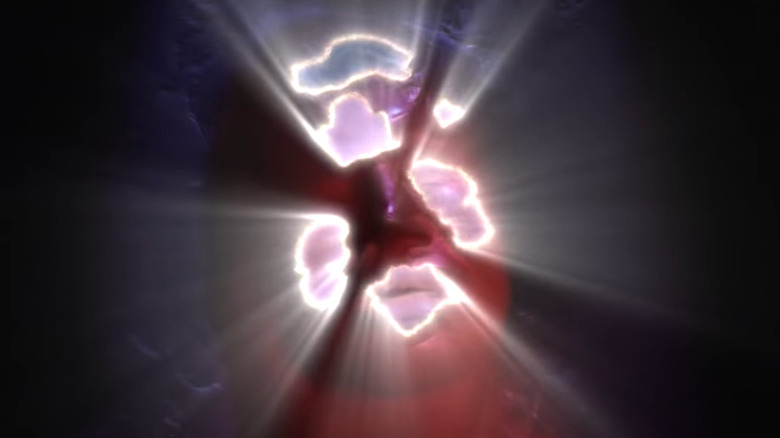Star Wars VFX Legend Dennis Muren Admits Han Solo's Defrosting Didn't Make 'Any Sense'
While most people love the original "Star Wars" trilogy, they'd also begrudgingly admit that "Return of the Jedi" is where the cracks begin to show. Nothing here is as bad as the prequels, but some of the issues that would define the prequels first start to reveal themselves. In addition to the annoyingly cuddly Ewoks, poor dialogue, and the way Han (Harrison Ford) and Leia (Carrie Fisher) don't seem to have much to do anymore, there's also the problem that it's now easier than ever to pull apart the holes in the plot.
The biggest offender is the opening sequence where the gang goes to rescue Han, who's been captured, frozen in carbonite, and left hanging around in Jabba the Hutt's lair. As has been nitpicked to death, not a single thing about Luke's plan makes any sense. It's all designed to be as suspenseful and cinematic as possible, rather than as any sort of reflection of our main characters' intelligence.
Even the process by which Han Solo gets defrosted from the carbonite is a little silly, as visual effects supervisor Dennis Muren will happily admit. The defrosting is basically shown by beams of light shining from within the carbonite. Muren described it as, "glowing from the inside," adding: "I don't know why there are all these shards of light coming out." In the end, he confessed, "Logically, it didn't seem to make any sense. But it looked nice."
Not bad, all things considered
To be fair, Muren had an impossible job on his hand: to figure out what the process of defrosting someone entirely within thirty seconds would look like, and then try to make it look believable. The result is something that is perfectly on brand for a slightly goofy space opera adventure series, one that would serve as inspiration for plenty of other science fiction films down the line. "It's funny how that's been copied in so many movies since then," Muren said, "where something's supposed to happen and these shards of light come out in straight directions."
Then again, "Star Wars" has always been innovative and influential in terms of its visual effects, even if a lot of it looks a little clunky now. Considering how many limitations the series had to work within the '70s and '80s, it's particularly impressive how the original trilogy has aged even better than the movies that came out twenty years later. Compared to the overwhelming amount of CGI that would define the prequels, the practical effects in these films are rarely as distracting.
For Han's defrosting specifically, a lot of time and work went into it. "I think it was either done with heat or with stop-motion," Muren said. "I can't quite remember which we did, but we did it many, many times to break those pieces off." It was like a lot of work, but it wasn't even the most time-consuming part of the opening sequence of Jabba's Palace. Compared to the work put into the Rancor scene a few minutes later, Han's defrosting almost seems easy.

